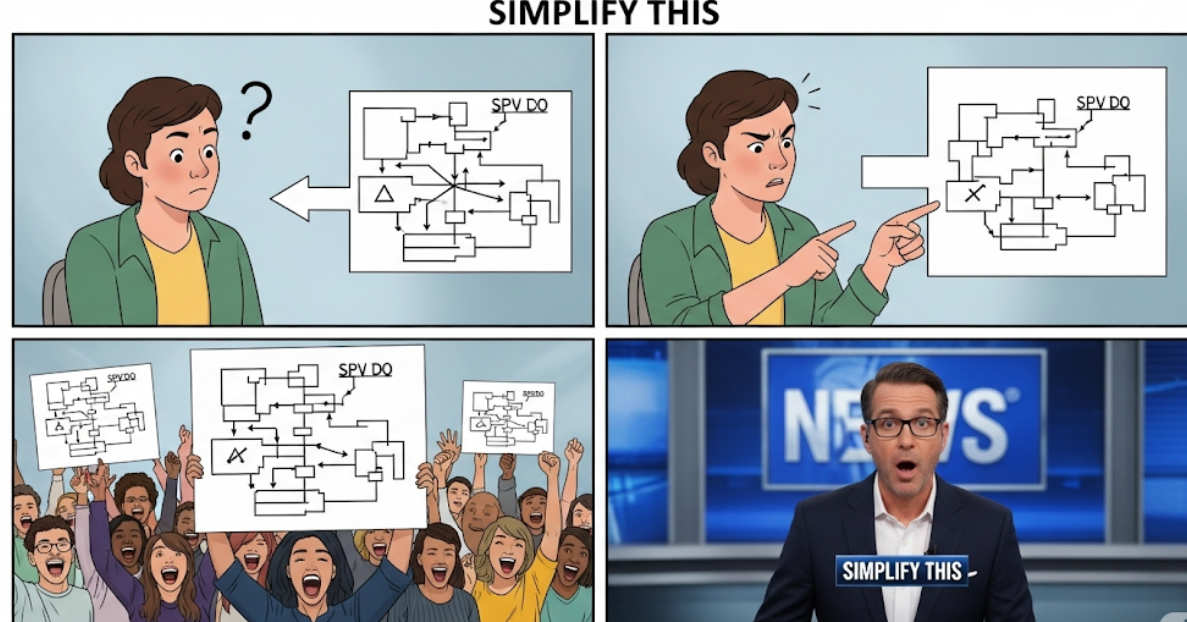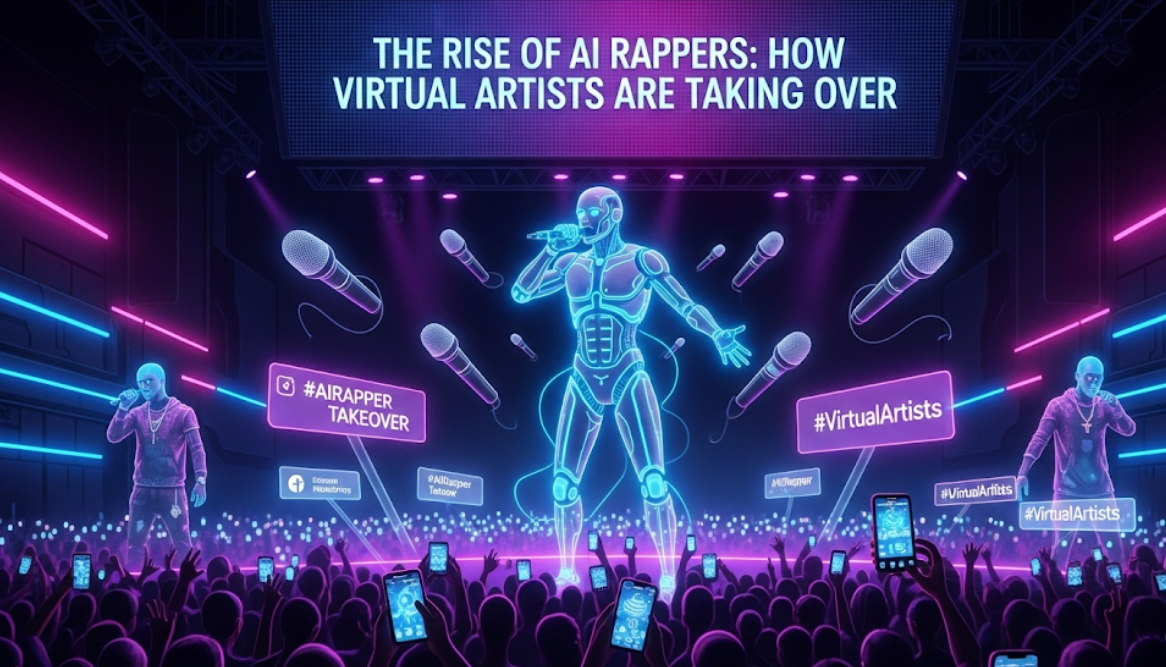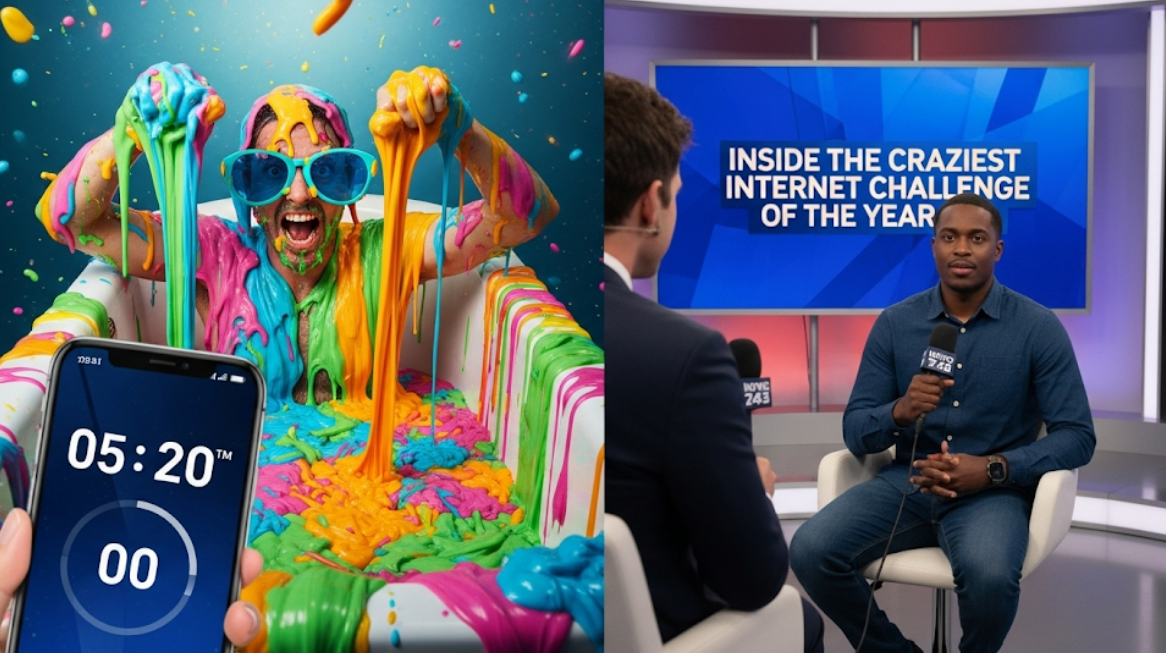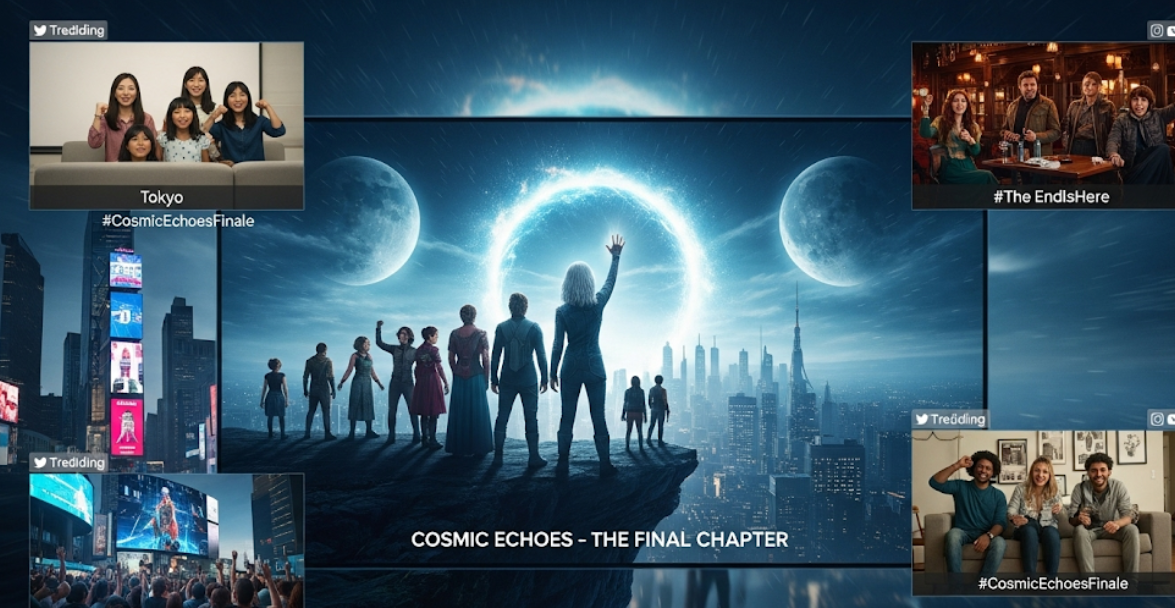Quick take
A resurfaced angry stare reaction clip has exploded into a remix-friendly, sound-synced meme format sweeping TikTok, Instagram, and X.
The trend thrives because it’s frictionless: two beats (setup → glare) + one caption = instant punchline.
CapCut templates and repost culture are accelerating the spread across languages and niches.
Brands, sports fandoms, and stan communities are already co-opting it, pushing the meme into “mainstream moment” territory.
The format’s power comes from three things: recognizability, remixability, and emotional clarity.
The spark: one glare, endless punchlines
Some trends start with elaborate edits. Not this one. This week’s internet obsession is a simple two-act structure built on a viral angry stare reaction. The base clip—pulled from a 2017 Bollywood interview and recontextualized in 2025—shows actor Arjun Kapoor fixing a reporter with a visibly annoyed look. Paired to a dramatic track, the glare has become the drop that creators cut to for comedic effect, labeling it with anything from “my manager reading my WFH excuses” to “the group chat when I say I’m going to sleep.” The result: a universal, instantly legible reaction meme that’s spread from film-fandom pages to cricket edits and beyond.
This is the meme format you’re seeing everywhere: [Calm setup text] → [beat bump in the audio] → [hard cut to the glare + captioned verdict].
It’s a clean, repeatable structure that anyone can copy on their phone in minutes.
The anatomy of a viral format (and why this one works)
1) A universal facial cue Humor needs recognition. A glare communicates judgment in any language. That “I’m not amused” micro-expression works across contexts—school, sports, work, stan wars—so creators can swap in almost any topic and land the joke. The cross-fandom leap into sports edits—Kohli, Dhoni, Rohit Sharma, and more—proved the template’s versatility and shot it into mainstream meme feeds.
2) A drop you can feel The sound drives the punchline. In this case, the dramatic beat is timed to the cut. Even without text, your brain anticipates the hit; with text, the moment becomes meme math: tension → release. This is the same “beat switch” logic that powers other viral formats in 2025—when the audio changes, so should the visual and the caption. Media creators have been highlighting exactly this speed-of-switch dynamic as the reason memes can hit millions in under a day.
3) Frictionless editing CapCut’s plug-and-play templates drop the barrier to entry. Creators simply paste text into the “setup” and “glare” slots and export. Multiple “try this new template” posts are circulating, which is always a tell that a trend has crossed early-adopter lines into mass remix mode.
4) Social proof in the wild Once tech and business creators on X/Threads start posting “new meme template just dropped,” you know it’s not just niche fandom chatter. Those meta-posts aren’t the trend; they’re the accelerant—signaling to content pros, brand managers, and community admins that it’s time to participate.
Proof it’s bigger than one fandom
If you needed further evidence that reaction-first templates are dominating this season, consider how a totally separate viral moment—the Coldplay “kiss cam” saga in Boston—metamorphosed into its own meme coinage: “Coldplayed.” The label and its derivatives (“getting Coldplayed”) jumped platforms within hours, spawning jokes, parody edits, and even mascot reenactments. Different story, same mechanism: a crystallizing facial/physical reaction + repeatable caption formula. When unrelated events ride the same structural meme logic, you’re looking at a cyclical format, not a one-off joke.
Timeline: how the format took over this week
Day 1 (Seed): The resurfaced reaction clip gains traction on Instagram meme pages and YouTube Shorts; early edits pair the glare with a cinematic beat. Sports accounts start grafting it onto cricket highlights—where fan culture guarantees rapid shares.
Day 2 (Template-ization): CapCut templates appear with “add your setup” placeholders; TikTok creators post “Try this new template 2025,” boosting discoverability in search and the For You feed.
Day 3 (Meta posts): Creators and commentators on X/Threads share “new meme template just dropped” posts, encouraging media folks and brand social teams to join in.
Day 4–5 (Cross-domain adoption): Corporate accounts and sports broadcasters test the format; stan accounts localize it with inside jokes and subtitles.
Day 6–7 (Peak saturation): The meme becomes inescapable on Reels/Shorts, spawning “best of” compilations and reaction-to-reaction content. Analysts and marketing blogs publish explainers on why these micro-formats scale so fast in 2025.
What creators are doing right (so you can, too)
Keep the setup under 5–7 words. Speed matters. Viewers must read the premise before the beat lands. The best examples use ultra-short text: “When finance sees my expense report,” “My mom after I say ‘five more minutes,'” “Teacher reading my AI essay.”
Cut on the beat—no crossfades. The hard cut sells the joke. Anything softer blurs the punchline.
Use top/bottom text hierarchy. Put the setup at the top; drop the verdict in the glare frame at the bottom. That visual rhythm is now familiar to users trained by Reels and Shorts.
Localize relentlessly. This format thrives on cultural specificity. Sports fans name a player; office workers reference a tool; students call out a teacher. The more “inside” it feels to a micro-community, the more likely it is to be shared within that circle—and then discovered by adjacent ones. Sports edits drove early scale here, especially with cricket fandoms.
Template responsibly. Use CapCut (or any editor) to save time, but keep originality in the caption. Over-templating without a new angle kills watch-through. The trend’s growth is tied to how easy templates make it, evidenced by a wave of “try this new template” posts surfacing this week.
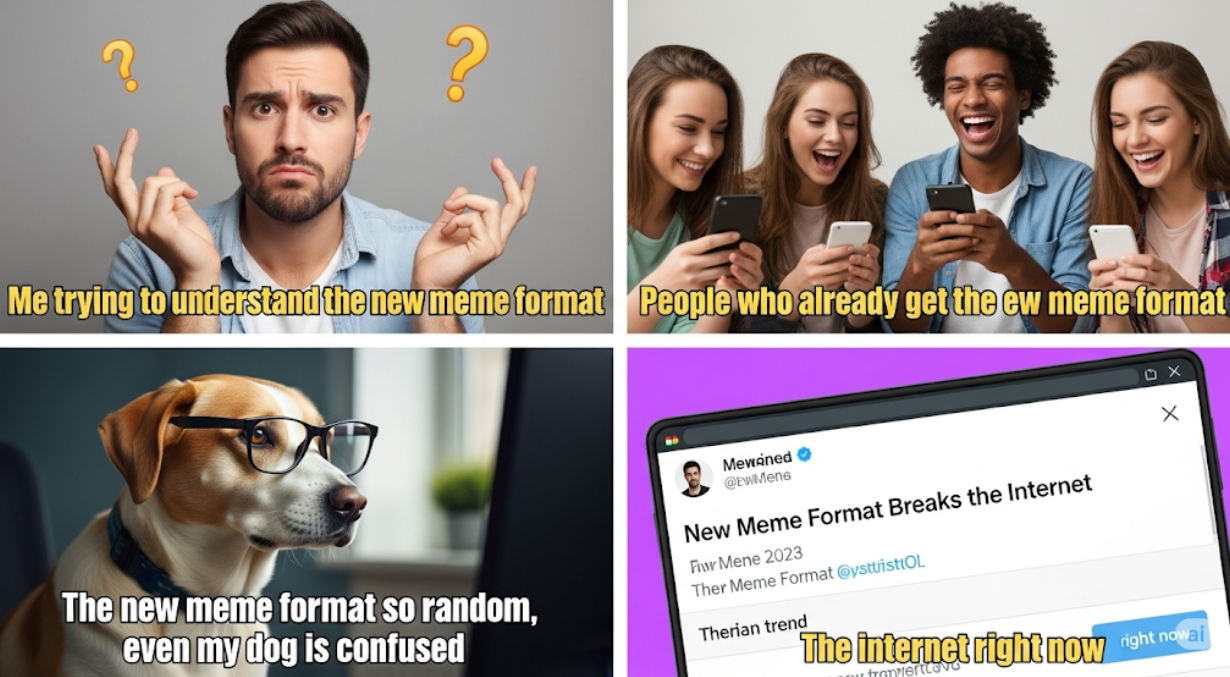
Why audiences can’t stop watching it
It compresses a social dynamic into two beats. Most jokes need setup, escalation, subversion. This one lets the audio carry the escalation so the caption can focus on subversion. It’s cognitively lightweight and emotionally loud—perfect for 15-second feeds.
It rewards anticipation. Once users learn the pattern, they start predicting the cut. Anticipation boosts attention time, which boosts the algorithmic push, which boosts discovery. Media analysts have been noting how format learning accelerates virality in 2025.
It’s brand-safe (ish). A glare is snarky but flexible. Unlike edgier trends, this one can be dialed mild or spicy. That’s why official accounts feel safe trying it earlier than usual, pushing the format into broader timelines.
The remix economy behind today’s meme booms
Creators aren’t just copying—they’re branching. This week’s glare template already has variants:
• Split-screen “You vs. The Guy She Told You Not to Worry About” riffs using the glare as the “authority” panel.
• Sports officiating jokes where the glare becomes the “third umpire” or “VAR” moment.
• Workplace cutaways labeling the glare as “Compliance,” “Finance,” or “Legal,” each time the beat hits.
This branching is typical of 2025’s meme supply chain: clips circulate in Discords, Reddit template subs, and Telegram groups; public “template drops” on X/Threads signal the next wave; CapCut/TikTok “use this template” posts convert passive scrollers into creators. The loop from micro-community spark to mass adoption can now complete in under 24 hours.
Risks and red lines
As with every reaction format, the line between playful judgment and harassment is thin. Misused, these edits can dog-pile real people or feed into culture-war bait. The same mechanics that make the glare meme so shareable—simplicity, broad applicability—can also amplify bad-faith narratives at scale. We’ve seen institutions attempt to co-opt meme grammar to normalize controversial actions; that should be a cautionary tale for brands tempted to punch down.
Will it last?
Short answer: as a clip, probably not; as a structure, absolutely.
Individual templates burn hot and fade fast, but the two-beat reaction architecture is evergreen. We’ll likely see the glare replaced by a new face, a pet side-eye, or a TV character cutaway—exact same timing, fresh surface. The Coldplayed moment shows how quickly the internet can coin a term, assign a reaction, and rinse-repeat across new stories. Formats survive by swapping skins.
How to ride it—today
Grab a template to lock timing. Then customize the captions for your community’s inside jokes.
Shoot your own reaction to avoid sameness. A co-worker’s deadpan, your team mascot, or a quick selfie glare keeps it fresh while preserving the beat structure.
Publish in bursts. Drop 3–5 variations tailored to different micro-audiences (work, sports, family) within 24 hours. The algorithm loves clusters.
Mind the ethics. Don’t aim the glare at private individuals. Stick to fictional characters, public figures in professional contexts, or purely situational captions.
Cross-post smartly. Reels and Shorts push reach; X/Threads deliver the “template just dropped” signal that attracts remixers.
Bottom line
A single look—the internet’s favorite universal language—has evolved into this week’s most contagious meme format. It’s simple, remixable, and primed for localization, which is why your feed feels wall-to-wall with glare-cuts right now. Whether you’re a casual scroller, a creator chasing views, or a brand trying not to be cringe, the playbook is the same: keep it short, cut on the beat, know your micro-community, and never mistake virality for a license to be cruel.
The internet will move on to the next face soon. But the two-beat reaction structure is here to stay—ready to be re-skinned by the next viral moment that makes us all say, “Oh, that’s so them.”


